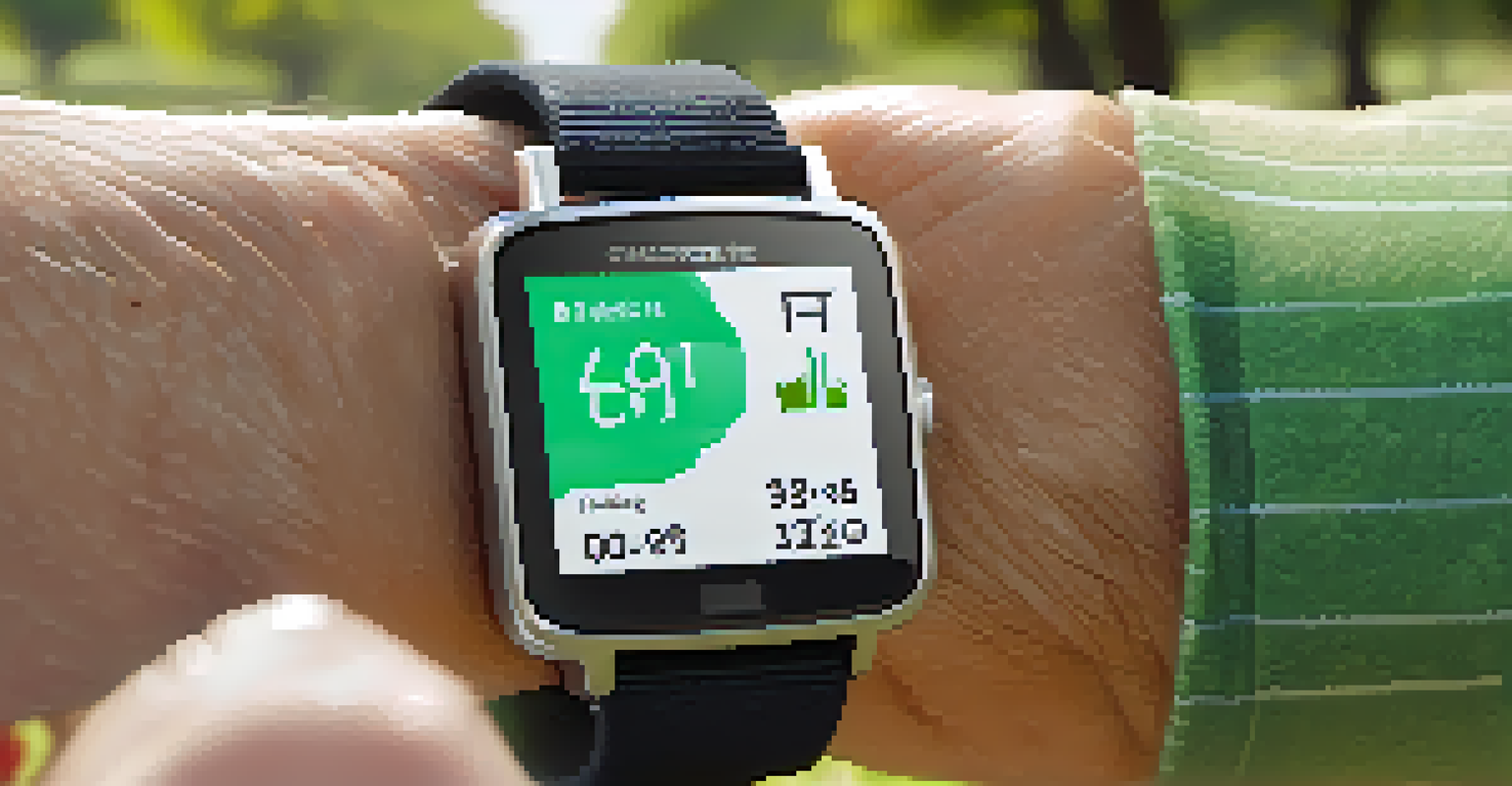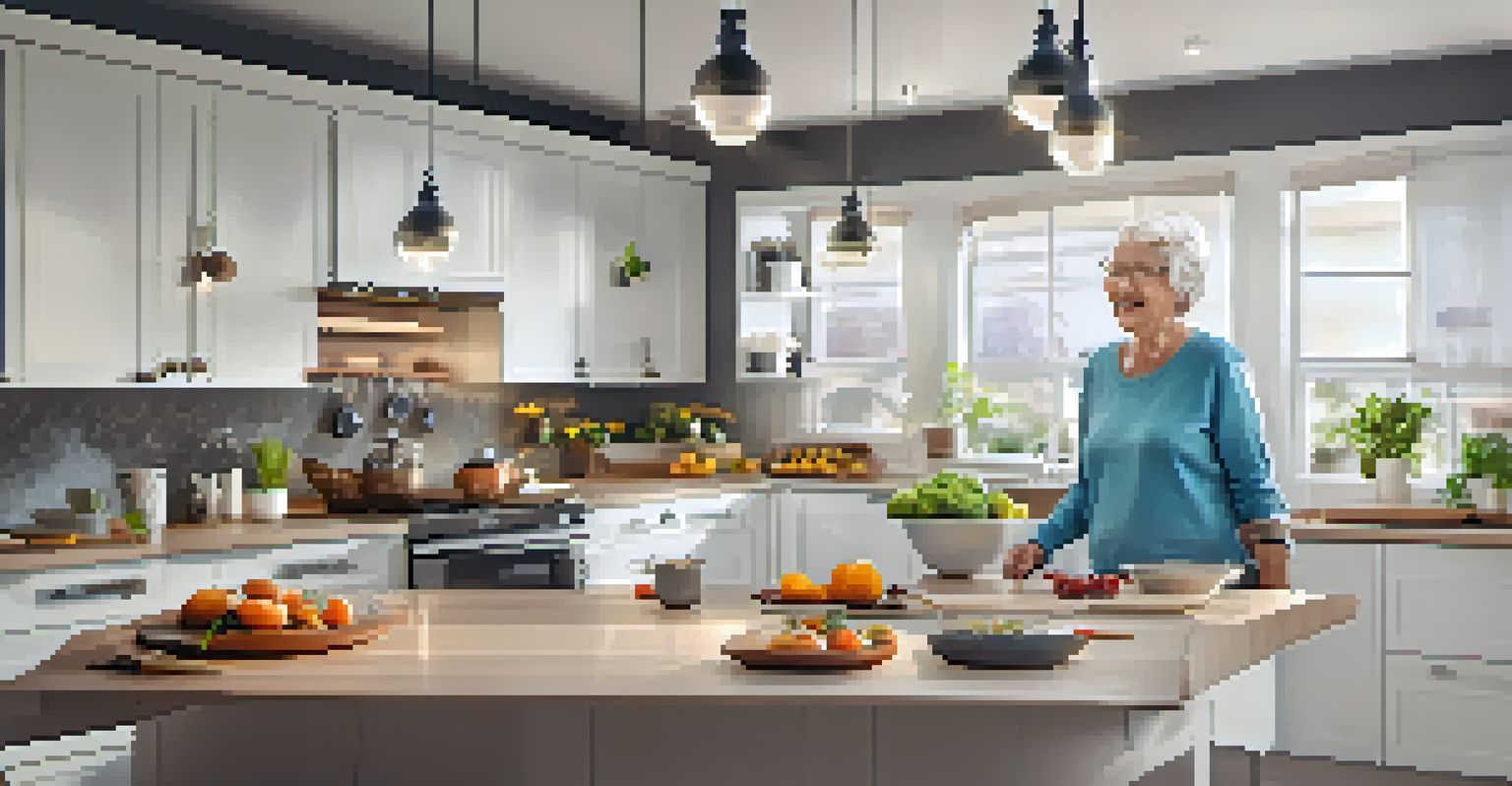Technology and Aging: Tools to Enhance Quality of Life

Understanding the Aging Population and Technology's Role
As our population ages, the intersection of technology and aging becomes increasingly important. Many older adults are embracing technology to maintain their independence and enhance their quality of life. This trend is not just about gadgets; it's about how these tools can help seniors stay connected, safe, and engaged.
Technology is best when it brings people together.
Consider the fact that about 73% of seniors use the internet, according to recent studies. This opens up a world of possibilities, from video calls with family to accessing health information online. By understanding this demographic's needs, we can tailor technology solutions that truly resonate with them.
Ultimately, technology shouldn’t feel alien to older adults. Instead, it should serve as an extension of their daily lives, providing assistance and fostering connections without overwhelming them.
Wearable Technology: Health Monitoring at Your Fingertips
Wearable devices like smartwatches and fitness trackers are revolutionizing how seniors manage their health. These gadgets can monitor heart rates, track physical activity, and even detect falls, providing peace of mind for both users and their families. Imagine a grandparent receiving real-time health updates right on their wrist!

One of the most significant benefits of wearable technology is its ability to promote proactive health management. For example, a senior who regularly tracks their activity levels might feel motivated to take daily walks, contributing to better overall health. Additionally, many wearables can sync with smartphones, making it easy to share data with healthcare providers.
Technology Enhances Senior Independence
Older adults are using technology to stay connected, safe, and engaged, improving their quality of life.
As wearables continue to evolve, they will offer even more features tailored to the aging population. This could include medication reminders or alerts for irregular heartbeats, ensuring that health remains a priority as we age.
Smart Home Devices: Creating Safer Living Environments
Smart home technology is not just a trend; it's a game-changer for seniors who wish to live independently. Devices like smart lights, thermostats, and security systems can be controlled remotely, making everyday tasks simpler and safer. For instance, imagine being able to adjust the thermostat from your couch or receiving alerts if someone enters your home unexpectedly.
The greatest advances of civilization, whether in architecture or in technology, have always met with a backlash from those who fear the new.
These devices can also enhance safety, which is crucial for older adults. Smart sensors can detect when someone has fallen and automatically alert emergency contacts, providing an added layer of security. Many seniors find comfort in knowing they have help at their fingertips without the need for constant assistance.
As smart home technology becomes more user-friendly, it's likely to become a staple in senior living. The convenience and safety it provides can significantly reduce the risk of accidents and enable a more comfortable lifestyle.
Telehealth: Accessing Healthcare from Home
Telehealth has emerged as a vital resource for seniors, especially in times when traveling to a doctor's office may be challenging. With a few clicks, they can consult with healthcare professionals from the comfort of their homes. This not only saves time but also reduces the stress often associated with medical visits.
The convenience of telehealth means that seniors can schedule regular check-ups or address concerns without the hassle of transportation. For example, a senior can discuss medication side effects or get advice on managing chronic conditions through a video call. This accessibility encourages proactive health management.
Wearables Improve Health Monitoring
Wearable devices enable seniors to actively manage their health by tracking vital signs and daily activities.
As telehealth technology advances, it will likely include more interactive features, such as remote monitoring tools. This integration can further enhance the quality of care seniors receive, ensuring they remain healthy and engaged.
Social Connection: Using Technology to Stay Engaged
Maintaining social connections is crucial for mental health, especially as we age. Technology offers various platforms that enable seniors to stay in touch with family and friends, from video calls to social media. Picture your grandparents video chatting with their grandchildren; it’s heartwarming and fulfilling for everyone involved.
Online communities and forums also provide spaces for seniors to share experiences and make new friends. Whether it’s a Facebook group focused on a shared hobby or a virtual book club, these platforms help combat feelings of isolation. They allow seniors to interact with others who understand their challenges and interests.
Moreover, technology can help bridge the generational gap. Older adults can learn from younger family members about using new apps or platforms, fostering deeper connections across age groups. This exchange of knowledge not only enriches relationships but also empowers seniors to embrace technology more fully.
Assistive Technology: Empowering Independence
Assistive technology encompasses a wide range of devices designed to help seniors maintain their independence. From mobility aids like walkers and scooters to adaptive utensils for easier meal prep, these tools play a vital role in everyday life. They can make tasks more manageable, allowing seniors to live more autonomously.
Additionally, voice-activated assistants like Amazon Alexa or Google Assistant can help seniors with reminders and information right when they need it. For example, they can set alarms for medication times or ask for the weather without needing to navigate a smartphone. This hands-free approach reduces barriers to technology use.
Telehealth Provides Easy Access to Care
Telehealth allows seniors to consult healthcare professionals from home, making healthcare more accessible and less stressful.
As technology continues to evolve, more assistive devices will emerge, tailored to individual needs. This innovation will empower seniors to maintain their lifestyle while ensuring they have the support they need.
The Future of Technology and Aging: A Bright Outlook
Looking ahead, the future of technology and aging is incredibly promising. As more innovations emerge, we can expect tools that are even more intuitive and accessible for older adults. Imagine a world where seniors can seamlessly integrate technology into their lives without feeling overwhelmed or confused.
With ongoing advancements in artificial intelligence, we can anticipate personalized experiences tailored to individual needs and preferences. For example, AI could help identify patterns in a senior's daily habits, offering suggestions for healthier living or alerting caregivers if something seems off.

Ultimately, the goal is to create a supportive environment where technology enhances the quality of life for seniors. By continuing to prioritize user-friendly design and accessibility, we can ensure that aging individuals thrive in a digital world.